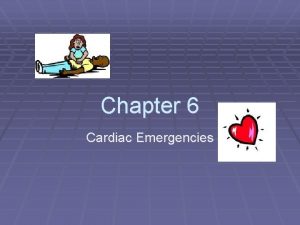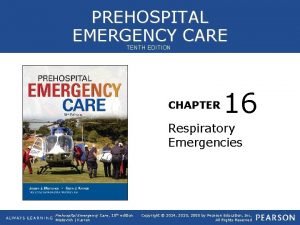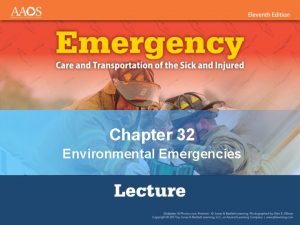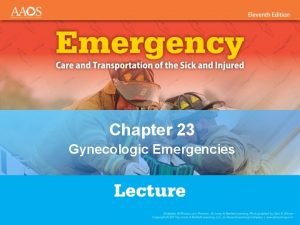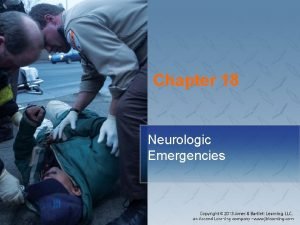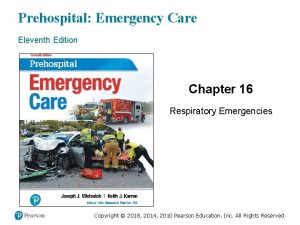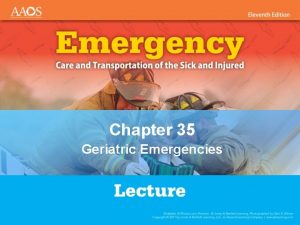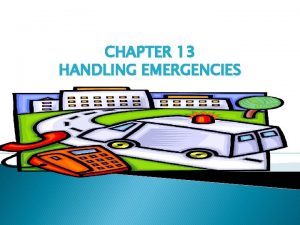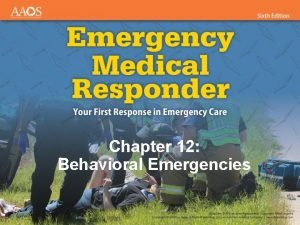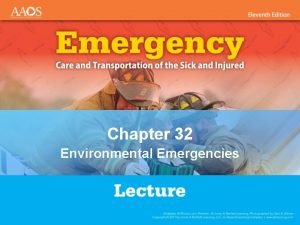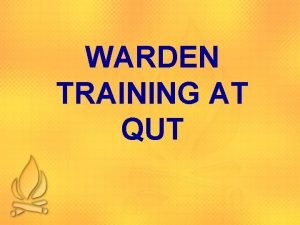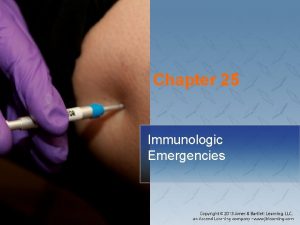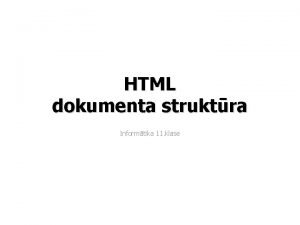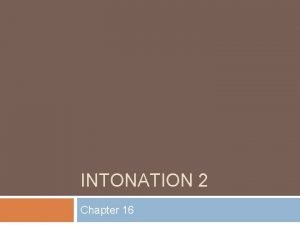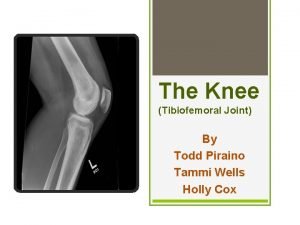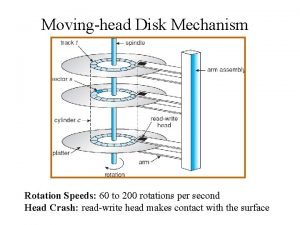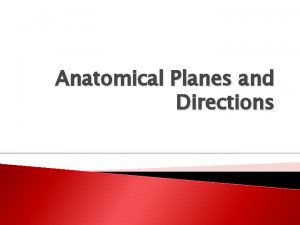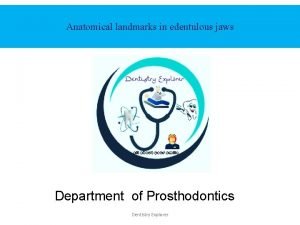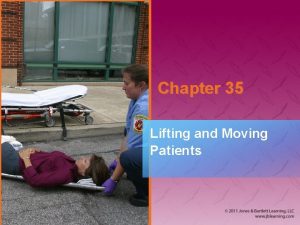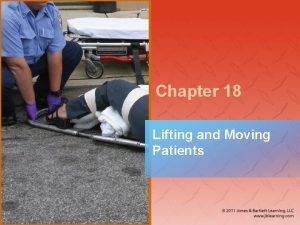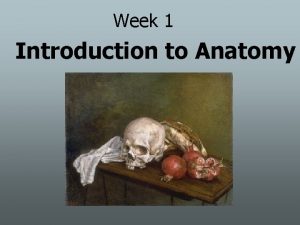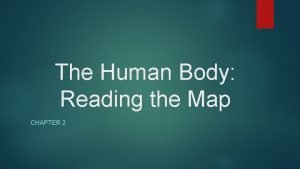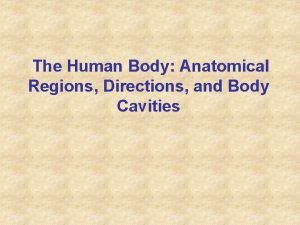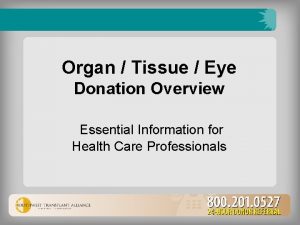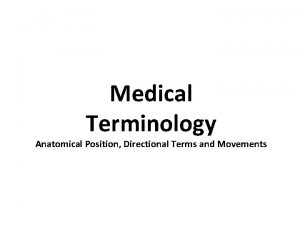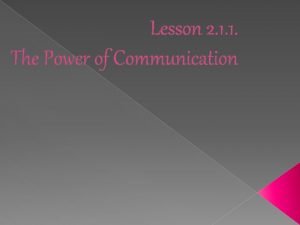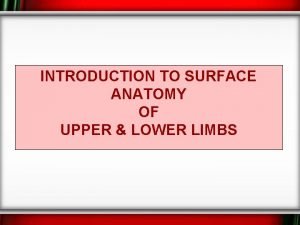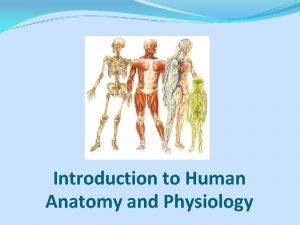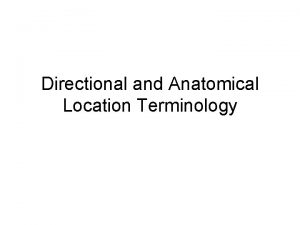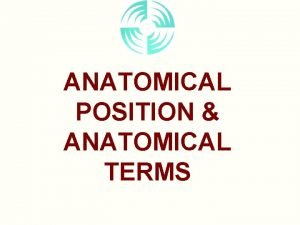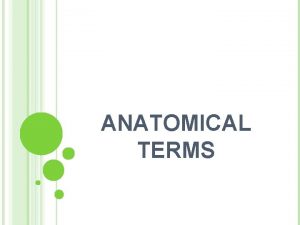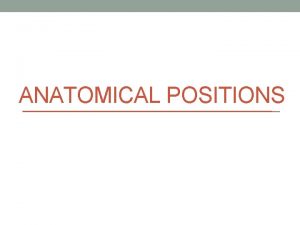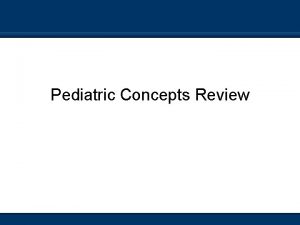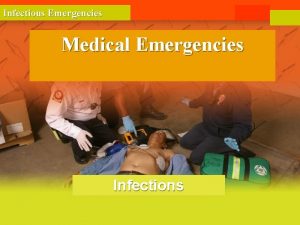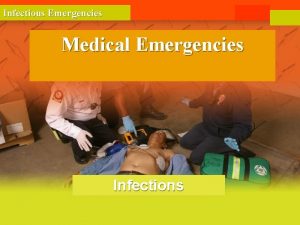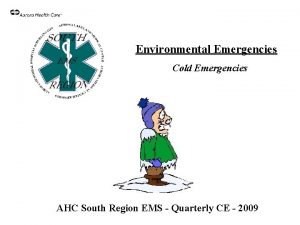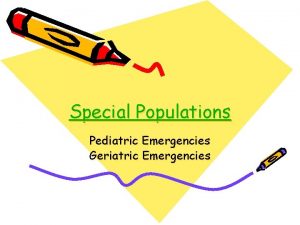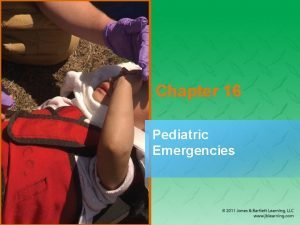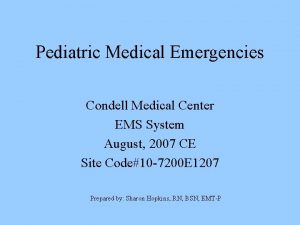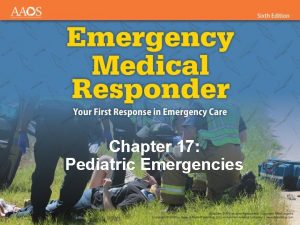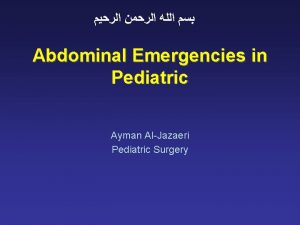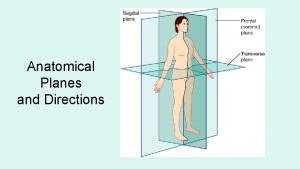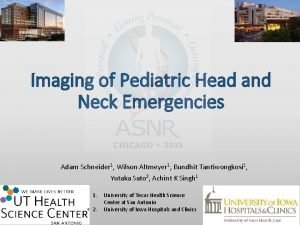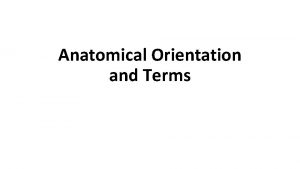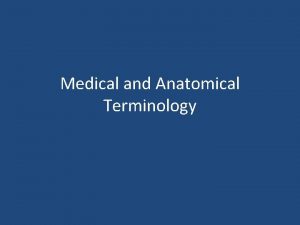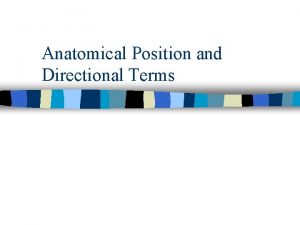Pediatric Emergencies IN EMS Anatomical Differences Head and

















































- Slides: 49

Pediatric Emergencies IN EMS


Anatomical Differences: Head and Airway

Anatomical Differences: Respiratory System

Anatomical Differences: Cardiovascular System Limited cardiac reserves Hypotension is a late sign of shock Mediastinum is more mobile and subject to injury

Anatomical Differences: Nervous System Nervous tissue and blood vessels are fragile Brain and spinal cord are not well protected Pediatric brain receives 2 x blood flow than adult brain: ◦ Minor injuries are significant ◦ More at risk from hypoxia Fulcrum of spinal column is higher in children Vertebral fractures/spinal cord injuries are uncommon in young children ◦ Still require immobilization with significant injury mechanism

Anatomical Differences: GI System

Anatomical Differences: Abdomen and Pelvis Organs are positioned more anteriorly Liver and spleen extend below ribcage Serious internal injury can occur from minor trauma

Anatomical Differences: Musculoskeletal System Immobilize all long bone injuries in children

Pediatric Assessment Address all life-threatening abnormalities as you encounter them during your assessment Use a weight-based resuscitation tape if you do not know the patient’s weight Ensure that you have age-appropriate equipment with you Establish rapport with parents/caregivers while remembering that the patient is your first priority

Assessment of the Pediatric Patient

Vital Signs in Pediatric Patients

Pediatric Assessment: Continue evaluation once a life-threatening condition is ruled out

Pediatric Assessment Secondary Survey

Pediatric Assessment: Disability

Transport Decisions Return to Pediatric Assessment Triangle frequently Continue to assess ABCs Treat life-threatening conditions In unstable patients, transport sooner rather than later In stable patients, continue with assessment

Pediatric Emergencies RESPIRATORY


Categories of Respiratory Disorders Upper Airway Lower Airway Lung Tissue Disease Disordered Control of Breathing


Upper Airway Disorders Croup Anaphylaxis Foreign Body Airway Obstruction

Lower Airway Disorders Asthma Bronchiolitis Per protocol, epinephrine is given IM

Lung Tissue Disease Pneumonia Pneumonitis Chemical aspiration ARDS (Acute Respiratory Distress Syndrome) Pulmonary edema Treatment: ◦ ◦ ◦ Antibiotics Albuterol Ventilatory support (invasive/non-invasive) Diuretics for ARDS/pulmonary edema Circulatory support with IV fluids/pressors

Disordered Work of Breathing Increased ICP (intracranial pressure) Poisoning/overdose Neuromuscular Disease Treatment: ◦ ◦ ◦ Avoid hypoxemia Avoid hypercarbia Avoid hyperthermia Ventilatory support (invasive/non-invasive) Antidote (if poisoning) Never give naloxone to a neonate

Pediatric Emergencies SHOCK

Categories of Shock Disorders Hypovolemic Distributive Obstructive Cardiogenic


Decompensated Shock (Hypotensive Shock) Age 0 -28 days • Systolic BP less than 60 29 days- 1 year • Systolic BP less than 70 1 year to 10 years Over 10 years • Systolic BP less than 70 + (age in years x 2) • Systolic BP less than 90

Hypovolemic Shock Non-hemorrhagic ◦ Vomiting ◦ Diarrhea ◦ Poor intake Fluid bolus: 20 ml/kg Control bleeding Consider TXA if > 16 years old, less than 3 hours post injury (hemorrhagic shock) Blood Transfusion (hemorrhagic shock) Hemorrhagic

Distributive Shock Anaphylaxis ◦ IM epinephrine/epinephrine infusion ◦ Antihistamine (Benadryl) ◦ Albuterol for wheezing (OLMC) Neurogenic ◦ Fluid bolus 20 ml/kg ◦ Norepi infusion (OLMC) Sepsis ◦ Fluid bolus 20 ml/kg ◦ Norepi infusion (OLMC) ◦ Antibiotics Adrenal insufficiency ◦ Dexamethasone 0. 6 mg/kg (max 10 mg) IV/IM/IO

Obstructive Shock Tension pneumothorax ◦ Needle decompression Cardiac Tamponade ◦ Pericardiocentesis Pulmonary embolus ◦ Consider thrombolytics Ductal Dependent ◦ Prostaglandin E 1

Cardiogenic Shock

Pediatric Emergencies BRIEF RESOLVED UNEXPLAINED EVENT

Brief Resolved Unexplained Event (BRUE) Child less than 2 years of age (per EMS protocols) Duration of event: less than 1 minute Most patients will have normal exam 50% will have underlying condition requiring medical care Make note of environment (toxins, meds, caregiver’s condition, trauma, abuse) Transport all patients (call OLMC if refusing transport)

Pediatric Emergencies NEONATAL AND YOUNG INFANT FEVER

Neonatal and Young Infant Fever

Fever in Neonates and Young Infants Transport all patients less than 90 days old with measured or reported fever (taken by any route by any caregiver) Call OLMC for assistance if caregiver/guardian refuses care/transport!

Pediatric Emergencies HYPOGLYCEMIA

Hypoglycemia Treatment: if blood glucose< 60 mg/d. L ◦ If no IV/IO access, give glucagon IM ◦ Less than 20 kg: 0. 5 mg ◦ Greater than 20 kg: 1 mg ◦ If IV/IO access, give D 10 W: ◦ 10 kg: 50 ml ◦ 20 kg: 100 ml ◦ 30 kg: 150 ml ◦ 40 kg: 200 ml

Pediatric Emergencies PALS ALGORITHMS

Pediatric BLS

Cardiac Arrest Pediatric cardiac dysfunction is usually due to a respiratory cause and is more likely to respond to effective oxygenation and ventilation, then fluid administration and then medications. Defibrillation alone is rarely successful.

Tachycardia with a Pulse and Poor Perfusion

Pediatric Bradycardia

Pediatric Emergencies OPIOID OVERDOSE

Opioid Overdose Manage Airway If respirations < 12 and narcotic overdose suspected: Remember, the priority in opioid overdose is airway management ! ◦ If no IV/IO/IM route: ◦ Naloxone 0. 5 mg IN repeated every 2 -5 minutes in alternating nostrils if patient remains apneic ◦ If IV/IO/IM: Naloxone: ◦ Less than 20 kg: 0. 1 mg/kg ◦ > 20 kg or > 5 years: 0. 1 -2 mg NEVER GIVE NALOXONE TO A NEONATE!!

Pediatric Illness MEASLES

Measles

 Lesson 6: cardiac emergencies and using an aed
Lesson 6: cardiac emergencies and using an aed Endocrine and hematologic emergencies
Endocrine and hematologic emergencies Emt chapter 18 gastrointestinal and urologic emergencies
Emt chapter 18 gastrointestinal and urologic emergencies Chapter 28 lesson 1
Chapter 28 lesson 1 Indexing head parts
Indexing head parts Pro minent
Pro minent I should take a local area orientation dive whenever i
I should take a local area orientation dive whenever i Chapter 16 respiratory emergencies
Chapter 16 respiratory emergencies Major nutritional deficiency diseases in emergencies
Major nutritional deficiency diseases in emergencies Chapter 32 environmental emergencies
Chapter 32 environmental emergencies Chapter 23 gynecologic emergencies
Chapter 23 gynecologic emergencies The term behavioral crisis is most accurately defined as
The term behavioral crisis is most accurately defined as Chapter 18 neurologic emergencies
Chapter 18 neurologic emergencies Chapter 16 respiratory emergencies
Chapter 16 respiratory emergencies Pumberton sign
Pumberton sign Chapter 35 geriatric emergencies
Chapter 35 geriatric emergencies Chapter 13 handling emergencies
Chapter 13 handling emergencies Chapter 12 behavioral emergencies
Chapter 12 behavioral emergencies Chapter 32 environmental emergencies
Chapter 32 environmental emergencies Chapter 17 cardiovascular emergencies
Chapter 17 cardiovascular emergencies Psychiatric emergency
Psychiatric emergency Qut security contact number for emergencies
Qut security contact number for emergencies Immunologic emergencies
Immunologic emergencies A 41 year old man presents with slow irregular breathing
A 41 year old man presents with slow irregular breathing The attacking firm goes head-to-head with its competitor.
The attacking firm goes head-to-head with its competitor. Informtika
Informtika Moving head disk mechanism
Moving head disk mechanism Head body head body gif
Head body head body gif What is a tonic syllable
What is a tonic syllable Biceps femoris innervation
Biceps femoris innervation 7 tones
7 tones Moving head disk mechanism
Moving head disk mechanism Anatomical position
Anatomical position Gummy bear directional and regional terms practice
Gummy bear directional and regional terms practice Define anatomical planes
Define anatomical planes Boundaries of buccal shelf area
Boundaries of buccal shelf area You may injure your back if you lift
You may injure your back if you lift Ems lifting devices
Ems lifting devices Cephalic body region
Cephalic body region Uniform anatomical gift act
Uniform anatomical gift act What does erect mean in anatomy
What does erect mean in anatomy Anatomical position supine
Anatomical position supine Body directions and planes
Body directions and planes Upper lower airway
Upper lower airway Anatomical axis of lower limb
Anatomical axis of lower limb Uniform anatomical gift act
Uniform anatomical gift act Foot movements terms
Foot movements terms A convoluted ridge between anatomical grooves
A convoluted ridge between anatomical grooves Knee surface anatomy palpation
Knee surface anatomy palpation Crural location
Crural location
